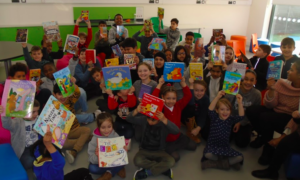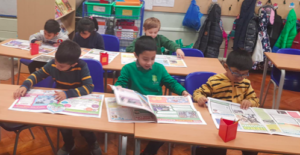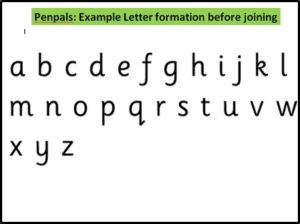English is one of the most important life-skills that we can teach the pupils at Park Primary School and is vital for children to be able to access other areas of learning. English develops pupils’ ability to communicate in spoken and written form. Through developing their knowledge, skills and understanding in English, pupils learn to appreciate that communication in all forms contributes to their wider understanding of the world in which they live.
To access the relevant information you need, we have broken down English into the following areas: phonics, reading across the school, oracy, writing, handwriting and spelling. Please click on the links to take you to the page you need
| English Curriculum Overviews | |||
| EYFS | Year 1 | Year 2 | Year 3 |
| Year 4 | Year 5 | Year 6 | |
 How we teach your children to read words
How we teach your children to read words
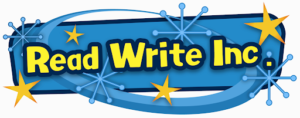
At Park Primary, we use a teaching programme called Read Write Inc. Phonics to teach our children to read and write. We make sure children have a good phonic knowledge before they move to Year 3. Some children complete the Read Write Inc. programme in Year 1 and others in Year 2. The children who have completed the programme move to a comprehension group where they focus on their understanding of the text. Children in Key Stage 2 who require extra support will receive one-to-one tuition to help build up their phonic knowledge.
In Reception and Key Stage 1, we group children by their reading progress for daily sessions and re-assess children every half-term so we can place them in the group where they’ll make the most progress. We provide extra daily one-to-one sessions for children who need a bit of a boost to keep up.
How do children learn to read phonetically?
The phonic knowledge is split into two parts.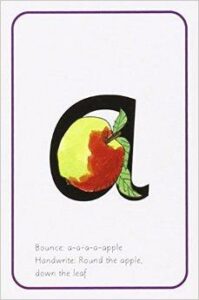
First we teach them one way to read and write the 40+ sounds in English. We use pictures to help, for example we make ‘a’ into the shape of an apple, ‘f’ into the shape of a flower. These pictures help children to read the sounds.
Children learn to read words by sound-blending using a frog called Fred. Fred says the sounds and children help him blend the sounds to read each word.
Then we teach children the different spellings of the same sounds, for example, they learn that the sound ‘ay’ is written ay, a-e and ai; the sound ‘ee’ is written ee, e and ea. We use phrases to help them remember each sound, for example, ay, may I play?, a-e – make a cake.
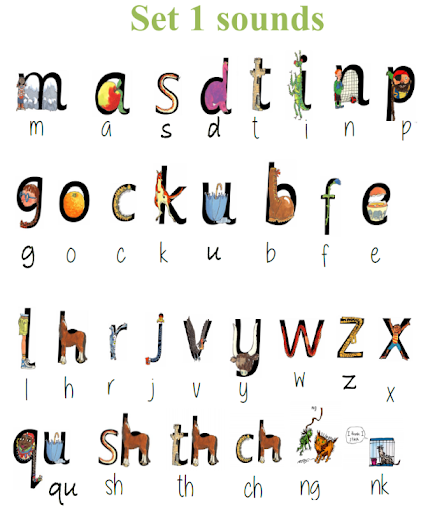 |
 |
How do we ensure children can read the books during phonic sessions?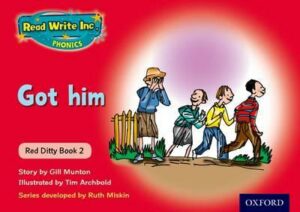
The first thing we do is to give children books we know they can read – without any guessing. (We read lots of other stories to them, but do not expect them to read these yet.)
Before they read the story, they sound out the names of characters and new words, practise reading any of the ‘tricky red’ words, and tell them a thought-provoking introduction to get them excited about the 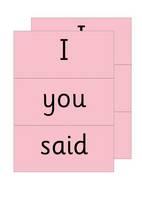 story.
story.
Then, over the week, children read the story a number of times: first to focus on reading the words carefully; then to help them read the story fluently; and finally, we talk about the story together, for example, how characters might be feeling and why.
How do we teach children to spell confidently?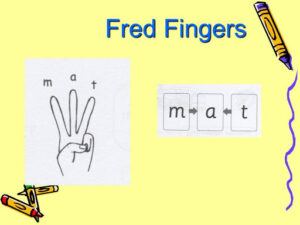
We teach children to spell words they have been reading during phonics sessions by using ‘Fred Fingers’: we say a word and then children pinch the sounds onto their fingers and write the word, sound by sound.
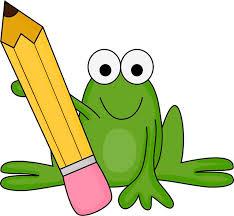 We encourage children to form letters with the correct pencil grip and in the correct sitting position from the very beginning.
We encourage children to form letters with the correct pencil grip and in the correct sitting position from the very beginning.
Once children can write simple words, we teach them to ‘hold’ a sentence in their heads and then write it with correct spelling and punctuation.
How can you help at home?
First of all, come to our meetings. We hold these throughout the year to give you practical advice about how you can help.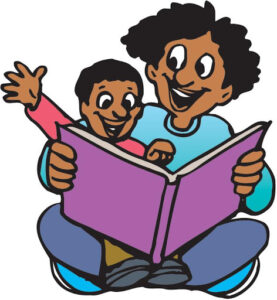
We appreciate you’re busy but here are two things that will make the biggest difference to your child’s progress. Every night:
- Read a bedtime story to your child.
Your child will bring home lovely books from their class book corner. Read these stories to your child – don’t ask them to read the story themselves as this is beyond their current reading stage. There is some really good advice about how to make bedtime storytime fun on www.ruthmiskin.com/ parents
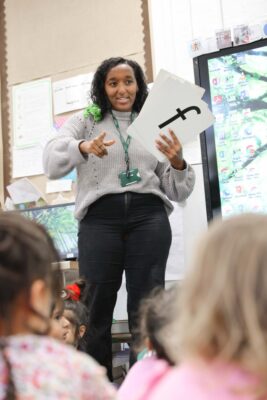 Your child will bring home a colour banded book suited to their current reading stage and an RWI Book Band Book which will only contain sounds that the children have been learning in their phonics lessons. Encourage your child to sound out unfamiliar words and praise them when they use their sounds correctly. Talk to your child about what they have read, explain the meaning of words they may not have come across before and ask them questions to see if they have understood the text. We encourage children to read the same text a number of times to help them build up a good understanding of what they have just read. Please write a comment in your child’s reading record book so the adults in school know how they are doing at home.
There’s more good advice on how to listen to your child read on www.ruthmiskin.com/parents
Your child will bring home a colour banded book suited to their current reading stage and an RWI Book Band Book which will only contain sounds that the children have been learning in their phonics lessons. Encourage your child to sound out unfamiliar words and praise them when they use their sounds correctly. Talk to your child about what they have read, explain the meaning of words they may not have come across before and ask them questions to see if they have understood the text. We encourage children to read the same text a number of times to help them build up a good understanding of what they have just read. Please write a comment in your child’s reading record book so the adults in school know how they are doing at home.
There’s more good advice on how to listen to your child read on www.ruthmiskin.com/parents
Phonics Screening Check
In Key Stage 1, children are assessed at the end of Year 1 using a Government Statutory Assessment Tool known as the Phonics Screening Check. This screening check confirms whether the child has learnt phonic decoding to an appropriate standard and will identify sounds needing further consolidation in Year 2. For more information on the Phonics Screening check and for suggestions on how to support your child at home please see the slides below:
At Park Primary we aim for every child to develop the skills (our progression in reading strategies document) they need to become confident, fluent, independent readers, whilst igniting a life-long love of reading. We encourage the children to become enthusiastic and reflective readers through contact with challenging and relevant texts and to appreciate a wide range of authors and genres (our Reading Curriculum on a page document).
In order to achieve this, we use a systematic and developmental approach to teaching reading as outlined below.
1. Systematic Phonics Programme
The school uses the Read Write Inc. (RWI) Phonics Programme for our children who are learning to read and write in Key Stage One, and as a catch up programme for children who need extra support in Key Stage Two.
2. Comprehension
The comprehension of texts is taught in a variety of ways, including during the ‘Reading as a Reader’ week of the English Learning Journey, Reading Gym sessions, Thinking Through Texts lessons and drama. All of these sessions focus on improving children’s understanding of written texts. Formal comprehension practice (answering test-style questions) is woven into parts of the English Learning Journey and the timetabled Reading Gym sessions.
3. Reading Gym
Reading Gym sessions include a range of activities that allow the children to develop and apply their decoding, fluency and comprehension skills using a range of texts from different genres. Under the Reading Gym ‘umbrella’, sessions are blocked into weeks of 1:1 reading where teachers listen to each child read, whole class reading sessions which explicitly focus on the teaching of reading skills with a focus on deepening understanding through questioning and high-quality conversation and through the use of a scheme of work called ‘Cracking Comprehension’ which teaches children how to answer comprehension style questions.
4. English Curriculum
At Park we know that reading and writing are completely interlinked. As such, our English Learning Journey focuses on the relationship between reading and writing. When children are introduced to a new text in English, time is spent analysing the author’s intent, understanding the text structure, summarising and clarifying the meaning of new vocabulary. This rigorous examination of different texts then works as a foundation for children’s own writing.
5. Reading Books
Reading books are sent home every week.
Reception
Children start off by taking home a blending book which contains words with the sounds they have been learning in school. Once children can blend, they will then progress through the RWI Book Bag Books which are linked to their RWI phonics group. Children also take home a book from the book corner which a family member can read to them for them to enjoy together. Parents and school staff communicate about the children’s reading progress through writing comments in the children’s reading record books.
The children take home an RWI Book Bag Book which is linked to the sounds they have been learning in their phonics sessions. These books are fully decodable. When children have finished the RWI scheme, they will bring home a colour banded reading book. To support the children with learning to read ‘Red Words’ (words that cannot be sounded out so have to be learnt by sight), children take home key word lists for them to practise reading. When they are confident with one list, they move onto the next. Parents and school staff communicate about the children’s reading progress through writing comments in the children’s reading record books.The children are also able to choose a book from their class book corner to take home and enjoy with their family members.
Key Stage Two
In Key Stage 2, when reading up to, and including, the white reading level, the children take home two reading books (one from the appropriate book band level and one from the Free Reader section which is a collection of fiction and non-fiction ‘real’ books that are not book banded). When children are beyond the white level, they may choose a Free Reader reading book which interests them or a reading book from the appropriate book banded level.
Order of the Book Band Levels
|
Pink |
Red |
Yellow |
Blue |
Green |
Orange |
Turquoise |
|
Purple |
Gold |
White |
Lime/ Brown |
Silver |
Sapphire |
Magenta |
6. Class Texts
We believe that it is vitally important that children hear high-quality books read aloud to them frequently. Class teachers read to their classes on a regular basis (at least 3x a week in Upper School and every day in Lower School) and this is prioritised in our timetable. In the lower years, this may be one short picture book a day, and in the upper years, each class has a termly class reader chapter book which they work through over a number of weeks.
7. Book Corners
We have created enticing and exciting book corners in every classroom, containing a limited number of high-quality texts with books and characters that represent our diverse community. Teachers have been working with their classes to sort through their book corners, ensuring each book is worth reading, and then creating a wishlist of new books, including a variety of genres and books with diverse characters.
We want all children to love reading! We know that children who enjoy reading and choose to read regularly for pleasure have the best start in life. As such, we try to encourage reading for pleasure in a number of ways:
- Pupils and teachers working together to research books for book corners (see above).
- Parent volunteers coming in to read with children.
- Teachers engaging with children’s reading through the use of reading records including recommending books to children.
- Reading competitions, such as ‘Get Caught Reading’.
- Taking part in reading activities, such as World Book Day.
- Trips to the local library and taking part in author events.
- Modelling reading for pleasure through a staff book club.
- Books in the playground for children to read at break and lunchtime.
- Sharing a wide range of excellent literature with the children throughout the curriculum.
- Parents and carers of pupils in Lower School are invited in to read with their children on a regular basis.
- PSA fundraisers which raise money for every child to receive a book from Santa.
- Pupils who receive Star of the Term awards are presented with a book token.
Useful Websites
Oxford Owl – There is useful advice and 100s of free ebooks, audio books and videos of stories being told by a storyteller. All you need to do is sign up, which is free of charge. Available on ipads too.
Reading for pleasure – please click on link for an article on the importance of reading for pleasure, as well as the many forms that it can take.
Ruthmiskin – please click on the link to view.
UKLA Promoting Reading for Pleasure – please click on link for an article on the importance of reading for pleasure.
Newham Library Services – the library services provides activities for young people as well as a wide range of books for them to use; free of charge.
Speaking and listening has always been an important part of our curriculum, but in recent years we have placed a greater emphasis on oracy at Park Primary School. Development in oracy is key to progression and learning in school but it is bigger than this; communicating effectively lies at the heart of social mobility and is critical in building effective relationships throughout our lives. Children at Park have plentiful opportunities to practise and develop their oracy skills in order to become clear, articulate, and thoughtful speakers in a range of different situations. Recent research has highlighted that children need to be taught the key oracy skills and those pupils who are, perform better in all areas of the curriculum and later in life. The four main strands of oracy are the physical, the linguistic, the cognitive and finally the social and emotional aspects – and we try our best to provide multiple opportunities to develop these. These areas include the effective use of the voice and body language; using appropriate language and vocabulary; including relevant and engaging content; showing audience awareness and developing rapport with their audience.
At Park, children are able to develop their oracy skills through carefully planned opportunities for talk, in a receptive learning environment which enables children to have their voice heard and feel valued. Oracy is at the heart of all teaching and learning at Park, but it is also explicitly taught through drama, Philosophy for Children (P4C), Thinking Through Texts and in planned vocabulary activities in English and topic sessions. Beyond this, technical terminology is explicitly taught in maths, computing and science so that children are supported in using these accurately and effectively across the curriculum, deepening their understanding of these subject areas.
Of course, listening and responding is an essential part of oracy and this is a key message we try instil in our pupils: we believe that it is essential that we ‘enter into each conversation assuming we have something new to learn’. As such, in recent years we have developed a system across the school whereby children are actively listening to the speaker in the classroom and they are encouraged to respond with purpose by gesturing that they ‘agree with’, ‘build on’ or ‘challenge’ what they have just heard. The language which accompanies these responses are developed and broadened and ultimately shape how children communicate and transact with others in their current and future lives.
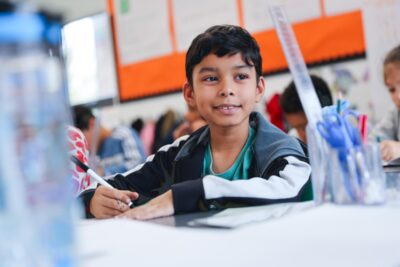 Writing is a vital life skill and even though there are ever increasing mediums for written communication in our modern world, it is still necessary for pupils to be able to communicate using a high standard of written English. We hope that by teaching the pupils at Park Primary School to write well they will have the skills to be able:
Writing is a vital life skill and even though there are ever increasing mediums for written communication in our modern world, it is still necessary for pupils to be able to communicate using a high standard of written English. We hope that by teaching the pupils at Park Primary School to write well they will have the skills to be able:
- to understand the importance and purpose of formal and informal written language;
- to communicate effectively in standard written form;
- to express themselves creatively and encourage reflection about the content of their work;
- to organise their thoughts and ideas logically that are appropriate for their intended audience.
At Park, there are many varied and exciting opportunities for the teaching and learning of writing skills across the curriculum. These include:
- the teaching of spelling, grammar and punctuation in line with the English National Curriculum, including the learning of weekly spellings (Years 1-6); understanding how to and being able to use a dictionary; the highlighting and use of subject specific language;
- shared writing and guided writing within English sessions and other curriculum areas as appropriate;
- providing opportunities in every learning journey, for the pupils to write at length independently with feedback given to the pupils about what they did well and how they need to improve.
The Park Writing Learning Journey:
Across the year pupils are exposed to a variety of different genres in both fiction and non-fiction and are introduced to a range of authors/poets (see the whole school text overview). We have woven in Talk for Writing in the Park Style.
We teach a 4 week English learning journey, which is broken down as follows:
1) Reading as a reader: pupils deepen their understanding of the text and may be exposed to a range of texts within the same text type or genre that support the learning focus. Pupils are given opportunities to use reading strategies (see the reading skills progression document) and drama activities to deepen their understanding of the text.
2) Reading as a writer: pupils explore the structure and language used within the text and consider why these have been used. In KS1, pupils orally retell the text, creating actions and work to embellish the text orally. In KS2, pupils work with the text deconstructed into sections to appreciate the components and language in each section. Pupils are expected and encouraged to orally embellish the text as they begin to rebuild the story. Pupils are given the opportunity to learn and practise grammar skills, linked to the text type or genre, and build these into sentence work that will support their final piece of writing. At this stage in the learning journey, pupils create a ‘tool kit’ which is used to embed the key features of a text type or genre.
3) Innovation: pupils plan and produce a piece of writing in the focus genre. Class teachers support the writing process through modelled and shared writing, which supports all pupils to access the process, regardless of their current ability. Pupils use the knowledge gained in week 2, on structure and language, to build-up their writing over the week; one section at a time. Pupils are taught editing skills as they write; with an emphasis on writing a sentence, rereading and improving directly. Class teachers feedback to individual students in real time, always working to move the learning forward within the taught session.
4) Pupils are given the time to complete and edit their piece of writing. Class teachers have the opportunity to deepen pupils understanding of editing skills or reteach grammatical skills, if a gap has been assessed. Pupils complete their learning journey by engaging with their feedback by ‘publishing’ their work.
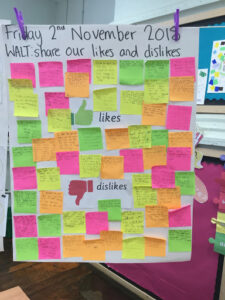 |
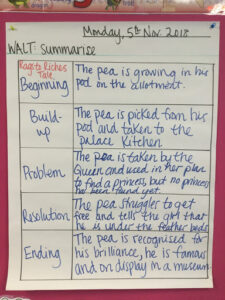 |
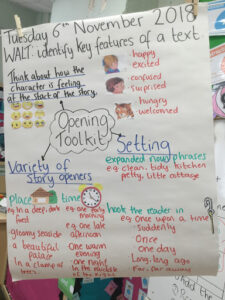 |
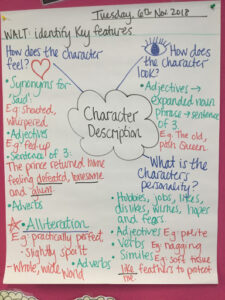 |
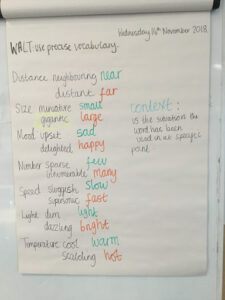 |
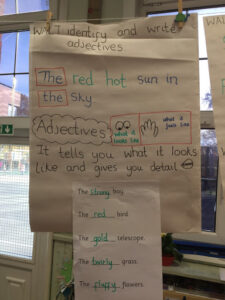 |
A key aspect of the whole English learning journey is high quality teacher modelling and whole class shared writing.
At Park, we us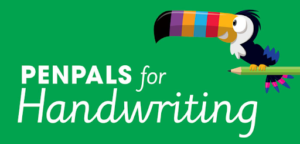 e the PenPals handwriting scheme of work to support the teaching and learning of handwriting. Teachers model and teach handwriting regularly as a part of English lessons as well as across the full curriculum where pupils are writing. Pupils who are consistently using the cursive script appropriately are awarded with a handwriting pen licence.
e the PenPals handwriting scheme of work to support the teaching and learning of handwriting. Teachers model and teach handwriting regularly as a part of English lessons as well as across the full curriculum where pupils are writing. Pupils who are consistently using the cursive script appropriately are awarded with a handwriting pen licence.
Progression in handwriting:
- Use a pencil and hold it effectively to form recognisable letters, most of which are formed correctly.
Year 1
- Sit correctly at a table, holding a pencil comfortably and correctly.
- Begin to form lower-case letters in the correct direction, starting and finishing in the right place.
- Form capital letters.
- Form 0- 9 digits.
- Understand which letters belong to which handwriting families (letters that are formed in the similar ways- see appendix) and to practise these.
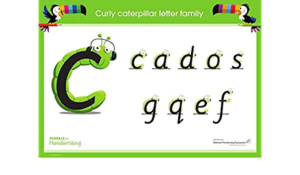
Year 2
- Form lower-case letters of the correct size relative to one another.
- Begin to use diagonal and horizontal strokes needed to join letters (continued in Yr3/ 4). See appendix for joining sets.
- Understand which letters, when adjacent to one another, are best left unjoined (continued in Yr3/ 4). See appendix for break letters.
- Write capital letters and digits of the correct size, orientation and relationship to one another and to lower case letters.
- Use spacing between words that reflects the size of the letters.
Years 3 & 4
- Increase legibility, consistency and quality of their handwriting:
- Downstrokes of letters are parallel and equidistant.
- Lines of writing are spaced sufficiently so that the ascenders and descenders do not touch.
Years 5 & 6
- Write legibly and fluently with increasing speed.
- Begin to develop their own personal style.
Teaching spelling rules
We teach spelling rules through weekly spelling sessions (Y1-Y6) and through the teaching of phonics in Reception and KS1. We use a spelling scheme called Rising Stars Spelling which teaches every spelling focus set out in the National Curriculum. Spelling rules are taught through fun investigative activities to engage and challenge our pupils.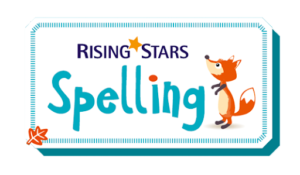
Weekly spelling tests
Each week (Y1-Y6), pupils are expected to learn the spelling of a set of 10 words and are tested on these every Friday. These words are taken from the word lists found in the National Curriculum and are words that children must learn. They also include common exception words (words which do not follow regular spelling patterns or rules, or words that cannot be phonetically sounded out). The idea of the weekly spelling test is to broaden our pupils’ vocabulary to support with their spoken and written English. Parents/carers are please asked to help define words for their children and put the words into meaningful contexts for them.


